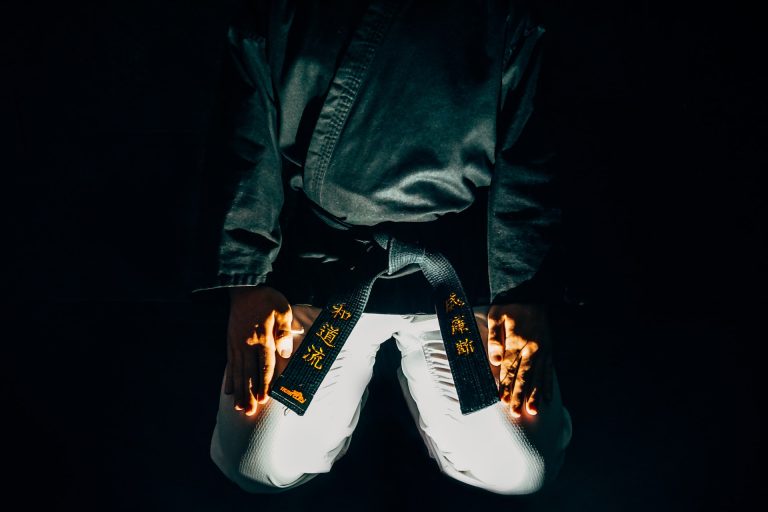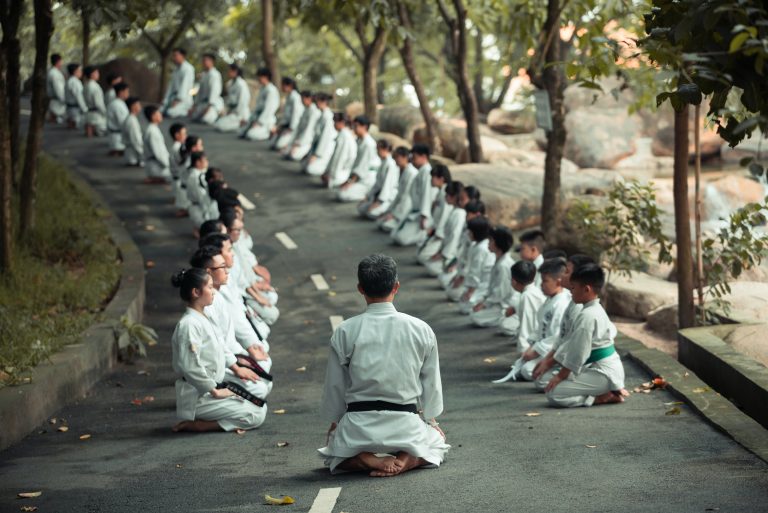Is Shotokan Karate Effective Self Defense?
Shotokan Karate is one of the most practiced styles of karate, known for its linear and powerful punch and kick techniques. Over the years, many people have been curious about whether Shotokan karate is effective as a self-defense system or not. In this blog post, we will explore the effectiveness of Shotokan Karate as a self-defense system.
What is Shotokan Karate?
Shotokan Karate is a style of martial arts developed by Gichin Funakoshi and his son Gigo Funakoshi in the early 1900s. It is a traditional Japanese martial art that emphasizes the use of the body as a weapon. Shotokan Karate focuses on developing strong, precise, and powerful techniques, with an emphasis on striking and kicking.
Shotokan Karate Techniques
Shotokan Karate techniques consist of powerful strikes and kicks, blocks, throws, and joint locks. The techniques are performed with speed, power, and precision, with an emphasis on proper body mechanics and balance.
Some of the most common Shotokan Karate techniques include:
- Front punch (jodan, chudan, gedan): A straight punch delivered with the front hand.
- Front kick (mae geri): A front kick delivered with the front leg.
- Roundhouse kick (mawashi geri): A kicking technique used to strike the opponent’s side or head.
- Side kick (yoko geri): A powerful kick delivered sideways.
- Block techniques (uke): Used to deflect or stop the opponent’s attacks.
- Throw techniques (nage): Used to throw the opponent to the ground.
- Joint lock techniques (kansetsu waza): Used to immobilize or control the opponent’s joints.
Is Shotokan Karate Effective for Self Defense?
Shotokan Karate is an effective self-defense system when practiced correctly. However, like any martial art or self-defense system, its effectiveness relies on the skill and training of the practitioner.
One of the key strengths of Shotokan Karate is its emphasis on full-contact sparring during training. Practitioners are trained to react to a live and dynamic opponent, which helps to develop practical fighting skills. Additionally, Shotokan Karate techniques are designed to be powerful and quick, which can be useful in a self-defense situation where speed and power are critical.
However, Shotokan Karate also has some limitations when it comes to self-defense. One of the weaknesses of Shotokan Karate is its focus on linear techniques. Shotokan Karate techniques are performed in straight lines, which can be limiting in a self-defense situation where movement and agility are key. Additionally, Shotokan Karate does not include grappling techniques or ground fighting, which can be disadvantageous in a self-defense situation that goes to the ground.
Overall, Shotokan Karate can be an effective self-defense system when practiced correctly. However, it is important to acknowledge that no martial art or self-defense system is perfect and that it is essential to have a range of techniques and skills to stay safe in any situation.
Is Shotokan Karate Effective Self Defense? Answering the Most Frequently Asked Questions
If you are considering learning martial arts for self-defense purposes, you might be wondering if Shotokan karate is a good choice. This style of karate is known for its focus on technique, physical conditioning, and mental discipline. However, you may be uncertain about its effectiveness in real-world situations. In this blog post, we will answer some of the most frequently asked questions about Shotokan karate as a self-defense form.
1. What is Shotokan karate?
Shotokan karate is a Japanese martial art created by Gichin Funakoshi in the early 20th century. It is characterized by its emphasis on strong stances and powerful strikes. Shotokan karate also incorporates various techniques including blocks, kicks, and joint locks. The style is practiced in both formal settings, such as competitions and demonstrations, and in more everyday settings, such as gyms and community centers.
2. Is Shotokan karate good for self-defense?
Yes, Shotokan karate is considered to be an effective form of self-defense. Its emphasis on powerful strikes and practical techniques make it a good choice for situations where physical harm may be imminent. Shotokan practitioners also learn techniques for escaping from grabs and holds, which can be helpful in real-world situations. Additionally, the rigorous training that is involved in learning Shotokan karate builds strength, stamina, and confidence, all of which can be invaluable for self-defense situations.
3. Does Shotokan karate teach sparring and partner drills?
Yes, Shotokan karate incorporates sparring and partner drills as a part of its training. These exercises help students to develop their techniques in a more realistic setting. By practicing with partners, Shotokan students learn how to execute techniques against a real opponent and develop the skills they need to defend themselves. Additionally, sparring and partner drills can be physically demanding, which helps to build strength and endurance.
4. What are some of the specific techniques taught in Shotokan karate?
Shotokan karate includes a wide range of techniques that can be used for self-defense. Some of the techniques are striking-based, such as punches, kicks, and elbow strikes. Others involve throws and joint locks that can be used to subdue an attacker. Additionally, Shotokan karate teaches a variety of blocks and parries that can be used to prevent an attack from landing in the first place.
5. Can anyone learn Shotokan karate?
Yes, most people can learn Shotokan karate regardless of their physical abilities. While the style does require physical conditioning and strength, practitioners can start at varying fitness levels and build up their abilities over time. Additionally, Shotokan karate is often taught in a supportive and inclusive environment, which can help students feel comfortable and motivated to learn.
6. How long does it take to become proficient in Shotokan karate?
The amount of time it takes to become proficient in Shotokan karate varies depending on many factors, such as a student’s natural abilities, level of commitment, and the frequency of training. However, most Shotokan practitioners can expect to train for many years before achieving mastery. It’s important to note that the focus of Shotokan karate is not just on physical skill, but also on mental discipline and character development. Therefore, even those who may not become expert fighters can still benefit greatly from learning Shotokan karate.
How To Use Shotokan Karate As A Self-Defense Technique
Shotokan Karate is a traditional form of martial art that has been practiced for centuries. It is known for its versatility and effectiveness as a self-defense technique. Shotokan Karate can help you defend yourself in dangerous situations where physical harm is imminent. If you are interested in learning how to use Shotokan Karate as a self-defense technique, then this guide is for you. Here is a step-by-step guide on how to use Shotokan Karate as a self-defense technique:
Step 1: Select the Right Dojo
The first step in learning Shotokan Karate is to find the right dojo. A dojo is a martial arts training center where students learn and practice different forms of martial arts. It is important to choose a dojo that has experienced instructors with a strong Shotokan Karate background. You can read reviews, talk to other students, and even try out different dojos to find the right one for you.
Step 2: Learn the Basics
Once you have found the right dojo, it is time to start learning the basics. Shotokan Karate is based on four basic techniques: punches, kicks, blocks, and strikes. You will learn how to perform these techniques in different combinations to create effective self-defense maneuvers. It is important to practice these techniques regularly to improve your form and proficiency.
Step 3: Increase Your Strength and Flexibility
Shotokan Karate requires a lot of strength and flexibility. It is important to work on your strength and flexibility to improve your performance. You can do this by following a regular exercise routine that includes cardio, strength training, and stretching. It is also important to maintain a healthy diet to improve your overall health.
Step 4: Build Your Stamina
Shotokan Karate requires a lot of stamina. You will be moving quickly and using a lot of energy during training. It is important to build your stamina by doing regular cardio exercises such as running or cycling. This will help you perform better during training and in real-life self-defense scenarios.
Step 5: Learn How to Assess a Situation
In order to use Shotokan Karate effectively as a self-defense technique, you must learn how to assess a situation. This means understanding when and how to apply the different self-defense techniques you have learned. You will learn how to assess a situation by understanding your surroundings, your attacker’s intentions, and their level of aggression. This will help you make a quick decision and take action to defend yourself if necessary.
Step 6: Practice Regularly
The final step in using Shotokan Karate as a self-defense technique is to practice regularly. Regular practice will help you improve your skills and build your confidence. It is important to attend classes at your dojo regularly and practice on your own. This will ensure that you are always prepared and ready to defend yourself if necessary.
In conclusion, Shotokan Karate can be an effective self-defense technique when used properly. By following these six steps, you can learn how to use Shotokan Karate to defend yourself in dangerous situations. Remember to choose the right dojo, learn the basics, increase your strength and flexibility, build your stamina, learn how to assess a situation, and practice regularly. With dedication and perseverance, you can master Shotokan Karate and use it to protect yourself and those around you.
Inhaltsverzeichnis






